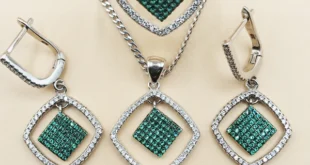Lanvin, one of the oldest surviving French fashion houses, has always been a brand that elegantly straddles the line between tradition and modernity. Founded in 1889 by Jeanne Lanvin, the brand’s long history is filled with innovation, luxurious designs, and a commitment to maintaining its distinctive heritage. Today, Lanvin continues to evolve, blending its storied past with contemporary influences to create fashion that is both timeless and relevant. This article explores Lanvin’s journey, its unique position in the fashion industry, and how it balances tradition with modernity.
The Origins of Lanvin: A Legacy of Elegance
Jeanne Lanvin: A Visionary Founder
lanvin began her career as a milliner before transitioning into fashion design. Her early success was driven by her ability to create garments that resonated with the tastes and needs of her clientele, primarily affluent mothers and daughters. By 1909, Lanvin had established herself as a significant player in the fashion world, becoming a member of the Chambre Syndicale de la Couture, the governing body of the French fashion industry.
Lanvin’s designs were characterized by their attention to detail, luxurious fabrics, and intricate embellishments. Her creations often featured delicate embroidery, fine lace, and the use of unusual color combinations. Lanvin’s signature color, a soft and dusty blue known as “Lanvin Blue,” became synonymous with the brand, symbolizing its commitment to elegance and sophistication.
The Expansion of the Lanvin Empire
Under Jeanne Lanvin’s leadership, the brand expanded beyond women’s fashion to include menswear, children’s clothing, and home décor. The diversification of the brand’s offerings helped establish Lanvin as a comprehensive luxury lifestyle brand. By the 1920s, Lanvin had become one of the largest fashion houses in Paris, with boutiques around the world and a loyal following among the elite.
The brand’s expansion into perfumes in 1927 with the launch of “Arpège,” a fragrance inspired by the sound of her daughter Marguerite playing the piano, further solidified Lanvin’s status as a luxury brand. “Arpège” remains one of the most iconic fragrances in the world, a testament to the enduring legacy of Jeanne Lanvin’s vision.
Lanvin in the Modern Era: Adapting to Change
Navigating the Shifts in Fashion
The fashion industry has undergone significant transformations since Lanvin’s inception, with the rise of fast fashion, changing consumer preferences, and the increasing importance of sustainability. Despite these shifts, Lanvin has remained relevant by staying true to its core values while also embracing change.
In the 21st century, Lanvin faced the challenge of maintaining its traditional identity in a rapidly evolving industry. The appointment of Alber Elbaz as creative director in 2001 marked a turning point for the brand. Elbaz brought a fresh perspective to Lanvin, blending its classic elegance with a modern sensibility. His designs were celebrated for their luxurious fabrics, innovative silhouettes, and a deep respect for the brand’s heritage.
Elbaz’s tenure at Lanvin was marked by a series of successful collections that resonated with both critics and consumers. His ability to reinterpret the brand’s codes while infusing them with contemporary relevance helped Lanvin navigate the changing landscape of fashion. Elbaz’s departure in 2015 was a significant moment for the brand, as it faced the challenge of continuing its legacy without his visionary leadership.
Embracing Innovation While Honoring Tradition
Lanvin’s ability to innovate while remaining grounded in its traditions is one of the keys to its enduring success. The brand has consistently sought to balance its rich history with the demands of the modern fashion industry. This approach is evident in its collaborations, which have allowed Lanvin to reach new audiences and explore different creative avenues.
In recent years, Lanvin has collaborated with contemporary artists and designers, blending its traditional craftsmanship with modern aesthetics. These partnerships have resulted in unique collections that showcase the brand’s ability to evolve while maintaining its identity. For example, Lanvin’s collaboration with the Italian sneaker brand, Off-White, brought a streetwear edge to its classic designs, attracting a younger, more diverse clientele.
Lanvin has also embraced digital innovation, recognizing the importance of online presence in the modern fashion landscape. The brand has invested in e-commerce, social media, and digital marketing to reach a global audience, ensuring that it remains accessible to fashion enthusiasts around the world.
The Role of Craftsmanship in Lanvin’s Identity
Preserving the Art of Haute Couture
At the heart of Lanvin’s identity is its commitment to craftsmanship. The brand has always placed a high value on the quality of its materials and the skill of its artisans. Lanvin’s ateliers, where garments are meticulously crafted by hand, are a testament to the brand’s dedication to haute couture.
This commitment to craftsmanship is evident in the intricate details of Lanvin’s designs, from the hand-embroidered embellishments to the perfectly tailored silhouettes. The brand’s ability to produce garments of such high quality is a reflection of its respect for the traditions of French couture.
Lanvin’s focus on craftsmanship also extends to its accessories and fragrances. The brand’s leather goods, for example, are crafted using the finest materials and traditional techniques, ensuring that each piece is not only beautiful but also durable. Similarly, Lanvin’s fragrances are created with the same attention to detail and quality, resulting in scents that are as luxurious as the garments they accompany.
The Impact of Sustainability on Lanvin’s Practices
As the fashion industry grapples with the challenges of sustainability, Lanvin has taken steps to ensure that its practices align with the growing demand for environmentally conscious products. The brand has begun to incorporate sustainable materials into its collections and has implemented initiatives to reduce its environmental footprint.
Lanvin’s commitment to sustainability is not only a response to consumer demand but also a reflection of its long-standing values. The brand’s emphasis on quality and craftsmanship inherently supports a more sustainable approach to fashion, as its garments are made to last, in contrast to the disposable nature of fast fashion.
Lanvin’s Influence on Contemporary Fashion
Inspiring New Generations of Designers
Lanvin’s influence on contemporary fashion is undeniable. The brand’s unique blend of tradition and modernity has inspired countless designers, who have looked to Lanvin as a model for how to balance heritage with innovation. Jeanne Lanvin’s pioneering spirit continues to resonate in the industry, serving as a reminder that fashion can be both timeless and forward-thinking.
Lanvin’s legacy is particularly evident in the work of designers who prioritize craftsmanship and quality in their collections. The brand’s emphasis on creating garments that are not only beautiful but also expertly made has set a standard for luxury fashion that continues to inspire the next generation of designers.
Lanvin’s Role in Defining Modern Elegance
In a world where fashion trends come and go, Lanvin has remained a beacon of elegance and sophistication. The brand’s ability to adapt to changing times while maintaining its core identity has allowed it to define what modern elegance looks like. Lanvin’s designs are characterized by their refined silhouettes, luxurious fabrics, and a subtle yet powerful sense of style.
The brand’s influence extends beyond fashion to encompass a broader cultural impact. Lanvin has played a role in shaping the way we think about luxury, craftsmanship, and the intersection of tradition and modernity. Its legacy is a testament to the enduring appeal of elegance and the power of fashion to transcend time.
Conclusion: The Future of Lanvin
gallery dept looks to the future, it faces the challenge of continuing to innovate while staying true to its roots. The brand’s ability to balance tradition and modernity will be crucial to its ongoing success. Lanvin’s commitment to craftsmanship, quality, and elegance will undoubtedly continue to define its identity, ensuring that it remains a leader in the fashion industry.
Lanvin’s journey is a reminder that the most successful fashion brands are those that can evolve with the times while remaining true to their core values. As the fashion landscape continues to change, Lanvin’s legacy of blending tradition with modernity will ensure its place in the pantheon of luxury fashion for years to come.
 Personal Finance and Attractive Interest Rates Unlock Smart Savings with Low Rates and Expert Financial Tips
Personal Finance and Attractive Interest Rates Unlock Smart Savings with Low Rates and Expert Financial Tips







